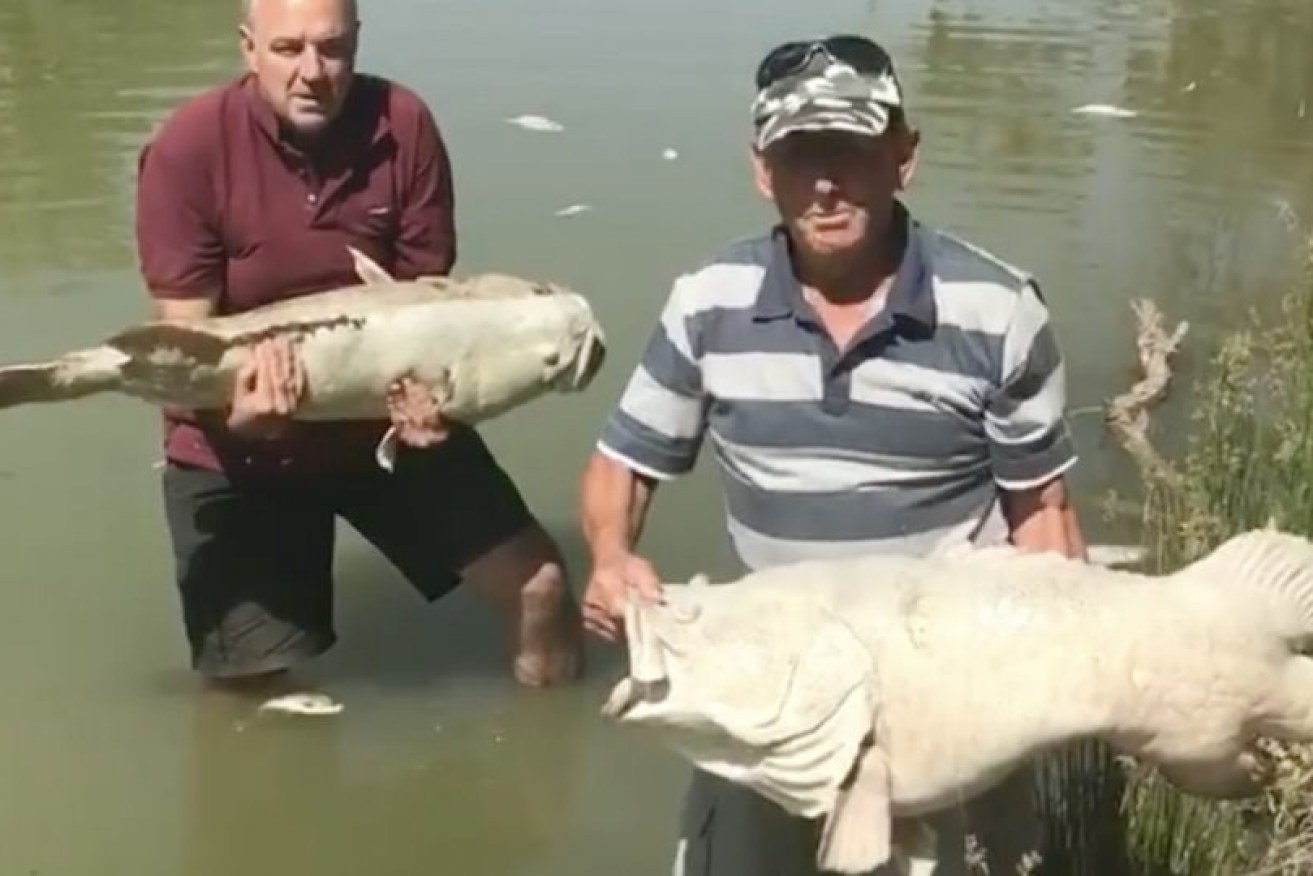The other Murray-Darling wildlife disaster – it’s what you don’t see


Farmers holding dead fish makes for flashy news stories, writes Michael Pascoe, but the real tragedy is harder to picture. Photo: Facebook
There is one good thing about a massive fish kill: You can see it. The whole world can see it when a farmer holds up a dead century-old fish that had survived plenty of previous and worse droughts.
The fish in their rotting riverside masses are extremely photogenic, at least from a news point of view. Their stink sparks predictable political blame games and, at least for a while, calls for action.
Yet the headline-grabbing dead fish have come late to the Murray-Darling ecological disaster story.
It’s much harder to focus outrage on something that’s not there, something that can’t be photographed. But like the dog that didn’t bark, the birds that are not there still bear powerful witness.
Those who care about such things as the sustainability of our inland rivers have known for years about the missing birds.
Too bad a story without pictures isn’t much of a story, that a creeping disaster doesn’t have the impact of a sudden event.
Despite the lack of pictures, the ABC, our besieged, genuinely national broadcaster, has tried to tell the story. It best covered the University of NSW study two years that found water bird numbers in the Murray-Darling basin down about 70 per cent over the past three decades.
“The birds have either died or they haven’t bred as much as they did in the past,” Professor Richard Kingsford said.
“We separated that group into all of the birds that eat fish, all of the birds that eat invertebrates and vegetation, and what we’re seeing is that all of those groups are also declining, which tells you the whole of the ecosystem is in decline.”
Radio National’s Background Briefing last year ran a two-part investigation of allegations that the multi-billion-dollar basin plan has delivered little environmental gain. Complaints subsequently made about some of the accuracy and balance of the report were upheld, but those complaints now appear trivial.
In July the outstanding (and it sometimes seems very lonely) environmental journalist in commercial media, Peter Hannam, reported on another UNSW study that found expanded irrigation meant large waterbird breeding events are one-third as likely to occur in one of the basin’s most important wetlands.
Some species require major floods to breed, but “water resource development” has cut the frequency of floods from one every 4.2 years to one in 11.4 years in the Narran Lakes. The $13 billion basin plan is modelled to increase flooding events to once every 6.7 years, but that still means 59 per cent fewer floods
The UNSW Centre of Ecosystem Science paper estimated the number of juvenile straw-necked ibis (not, not the ubiquitous urban white ibis, known fondly as a bin chicken) had already been cut by 2.3 million.
Spectacular fish kills gain instant focus on a particular problem. Steady degradation just eats away at the entire environment in that tricky way nature has of everything being connected.
As Hannam reported, the straw-necked ibis is known as a “farmer’s friend”, feasting on the locusts and grasshoppers – some natural balance for more hoppers in a subsequent good season.
Earlier in the week of Hannam’s report, the federal government formalised the cutting of 42 billion litres a year to the rivers supplying the lakes.
More broadly across the basin, migratory birds stop coming. Their complex inter-relationship with the environment is steadily lost. Everyone ends up the poorer.
The government’s grandly named Australian Action Plan for Birds 2000 identified 24 species on the brink of being “considered nationally threatened” and 14 “already threatened” in the basin, including three locally extinct.
“The Murray-Darling Basin bird fauna is distinguished by an inordinately high number of near-threatened species and subspecies, mostly woodland species,” the report said.
So spare me too much sudden political concern about visible dead fish. That, too, will pass.
The disaster of missing birds has been rolling on for years, not that the relevant federal ministers doing the water deals seem to have cared.








